
Xylosma is a genus of flowering plants in the family Salicaceae. It contains around 100 species of evergreen shrubs and trees commonly known as brushhollies, xylosmas, or, more ambiguously, "logwoods". The generic name is derived from the Greek words ξύλον (xylon), meaning "wood, tree", and ὀσμή (osmé), meaning "smell", referring to the fragrant wood of some of the species. The Takhtajan system places it in the family Flacourtiaceae, which is considered defunct by the Angiosperm Phylogeny Group.

Menispermaceae is a family of flowering plants. The alkaloid tubocurarine, a neuromuscular blocker and the active ingredient in the 'tube curare' form of the dart poison curare, is derived from the South American liana Chondrodendron tomentosum. Several other South American genera belonging to the family have been used to prepare the 'pot' and 'calabash' forms of curare. The family contains 78 genera with some 440 species, which are distributed throughout low-lying tropical areas with some species present in temperate and arid regions.

Abuta is a genus in the flowering plant family Menispermaceae, of about 32 species, native to tropical Central and South America.

Odontocarya is a plant genus in the family Menispermaceae. It includes 38 species native to the tropical Americas, ranging from southern Mexico to northern Argentina.

Sideroxylon is a genus of trees in the family Sapotaceae described as a genus by Linnaeus in 1753. They are collectively known as bully trees. The generic name is derived from the Greek words σιδηρος (sideros), meaning "iron", and ξύλον (xylon), meaning "wood."

Pectis is a genus of flowering plants in the family Asteraceae described as a genus by Linnaeus in 1759.
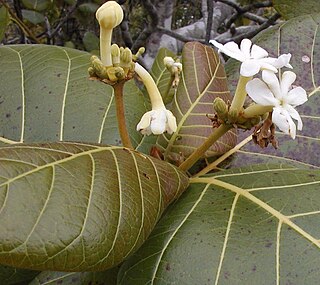
Guettarda is a plant genus in the family Rubiaceae. Most of these plants are known by the common name velvetseed.
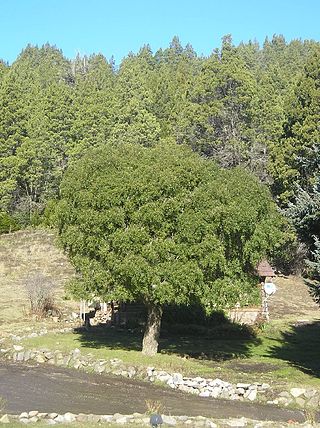
Maytenus is a genus of flowering plants in the family Celastraceae. Members of the genus are distributed throughout Central and South America, Southeast Asia, Micronesia, and Australasia, the Indian Ocean and Africa. They grow in a very wide variety of climates, from tropical to subpolar. The traditional circumscription of Maytenus was paraphyletic, so many species have been transferred to Denhamia and Gymnosporia.

Picramnia, the bitterbushes, is a genus of flowering plants generally placed in the family Picramniaceae, but sometimes included in Simaroubaceae. The name is conserved against the genera Pseudo-brasiliumAdans., and TaririAubl., both which have been rejected.
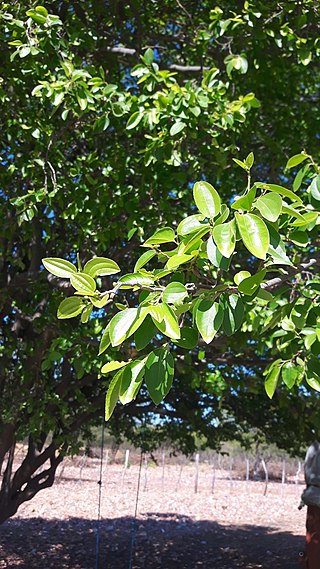
Sarcomphalus is a genus of plants in the family Rhamnaceae.

Tapura is a genus of plant in the family Dichapetalaceae.

Rondeletia is a genus of flowering plants in the family Rubiaceae. It is endemic to the Neotropics. There are around 160 species.

Galactia is a genus of plants in the legume family (Fabaceae). It belongs to the subfamily Faboideae and tribe Diocleae They do not have an unambiguous common name, being commonly called milk peas, beach peas or wild peas. They are perennial herbs or subshrubs with prostrate, climbing, or erect forms.
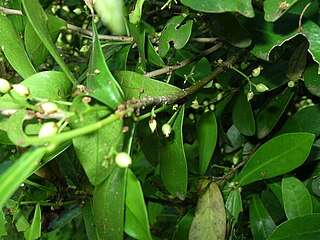
Daphnopsis is a plant genus in the family Thymelaeaceae. It includes 72 species native to the Neotropics. They are shrubs and small trees with tubular or bell-shaped flowers. Individuals are dioecious, with male and female flowers produced on separate trees.
Morisonia is a genus of flowering plants in the family Capparaceae, found across the Americas from the United States to Argentina. They are typically shrubs or small trees. The genus was recently enlarged with New World Capparis species due to existing taxonomic instability.
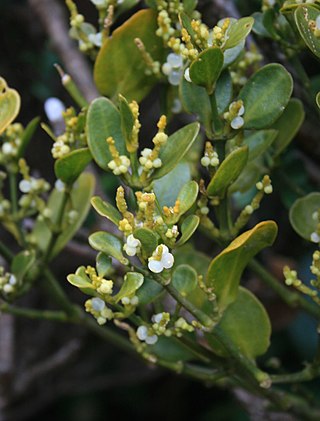
Dendrophthora, the tree destroyers, is a genus of flowering plants in the sandalwood family Santalaceae, native to tropical and subtropical Latin America and the Caribbean. They are hemiparasitic mistletoes that grow on a wide variety of host plants.
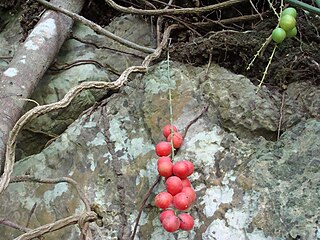
Disciphania is a genus of flowering plants belonging to the family Menispermaceae.
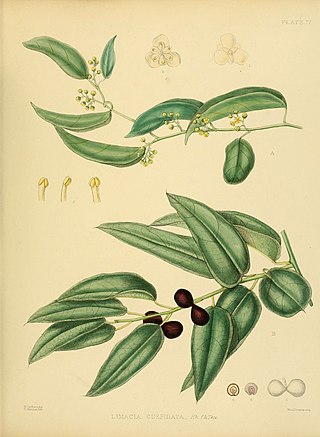
Hypserpa is a genus of flowering plants belonging to the family Menispermaceae.
Sciadotenia is a genus of flowering plants belonging to the family Menispermaceae.

















